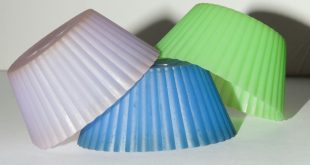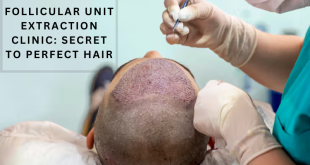Clubfoot is a congenital condition that affects the foot, causing it to twist inward and downward. It can occur in one or both feet and is usually diagnosed at birth or during a prenatal ultrasound. Although the exact cause of clubfoot is not fully understood, several factors may contribute to the condition, including genetics, environmental factors, and maternal health. While there is no guaranteed way to prevent clubfoot during pregnancy, there are certain practices, lifestyle choices, and medical considerations that can potentially reduce the risk of the condition.
This article will explore the various strategies that may help in preventing clubfoot during pregnancy. These include understanding the risk factors, improving maternal health, managing genetic risks, and ensuring proper prenatal care.
Understanding Clubfoot
Clubfoot, or congenital talipes equinovarus (CTEV), is a condition where the foot is abnormally positioned, often turning inward, downward, or both. It can range from mild to severe, and in severe cases, the bones and joints of the foot may be malformed. The condition is diagnosed through physical examination after birth, and in some cases, it can be identified in a prenatal ultrasound.
There are two main types of clubfoot:
- Idiopathic Clubfoot: The cause is unknown, and it occurs without any associated abnormalities or genetic factors.
- Non-idiopathic Clubfoot: This type of clubfoot is associated with other genetic conditions or syndromes, such as spina bifida or cerebral palsy.
The exact cause of clubfoot remains unclear, but it is believed to result from a combination of genetic and environmental factors. Family history plays a role, with the condition being more common in children of parents who have had it. Environmental factors such as maternal health, lifestyle choices, and prenatal care are also thought to influence the development of the condition.
Understanding the Risk Factors
Several risk factors may increase the likelihood of a baby being born with clubfoot. Understanding these factors is essential for expecting mothers, as they can help them take preventive steps where possible. Some of the most common risk factors for clubfoot include:
- Genetics: Family history is one of the most significant risk factors for clubfoot. If one parent or a sibling has had the condition, there is a higher chance of the baby being born with clubfoot.
- Maternal Smoking: Smoking during pregnancy has been associated with an increased risk of congenital abnormalities, including clubfoot.
- Maternal Age: Older Women (over the age of 35) may have a higher risk of giving birth to a child with clubfoot.
- Multiple Pregnancies: Women who have had multiple pregnancies may have a higher risk of having a child with clubfoot.
- Infections and Health Conditions: Infections during pregnancy, such as rubella, and maternal conditions like diabetes or obesity may increase the risk of birth defects, including clubfoot.
- Abnormalities in Amniotic Fluid: Insufficient or excessive amniotic fluid (oligohydramnios or polyhydramnios) can affect fetal development and increase the risk of congenital deformities, including clubfoot.
Maternal Health: Prevention Starts with You
While some factors, such as genetics, are beyond the control of the mother, there are many steps expecting mothers can take to optimize their health and reduce the risk of clubfoot and other birth defects. These include:
1. Prenatal Care
The importance of regular prenatal care cannot be overstated. Regular visits to the obstetrician or midwife help ensure that both mother and baby are monitored for potential health issues. Early screenings and ultrasounds can detect conditions like clubfoot, and timely intervention can help manage the condition.
2. Adequate Nutrition
Eating a balanced diet is crucial for a healthy pregnancy. Proper nutrition ensures the proper development of the fetus and reduces the risk of many birth defects. Folic acid, in particular, is essential, as it helps prevent neural tube defects. Although it does not directly prevent clubfoot, folic acid and other nutrients like calcium, iron, and vitamin D contribute to overall fetal health and development. Mothers should follow their healthcare provider’s advice regarding prenatal vitamins and dietary needs.
3. Managing Chronic Health Conditions
If the mother has chronic conditions such as diabetes, obesity, or hypertension, it is essential to manage them before and during pregnancy. For example, uncontrolled diabetes can increase the risk of birth defects, including clubfoot. Maintaining a healthy weight, controlling blood sugar, and managing other health conditions help minimize the risk of complications.
4. Avoiding Smoking and Alcohol
Smoking and alcohol consumption during pregnancy can increase the risk of birth defects, including clubfoot. Smoking reduces the amount of oxygen the fetus receives and increases the risk of a range of congenital abnormalities. Alcohol can cause fetal alcohol syndrome and contribute to various birth defects. Pregnant women should avoid these substances altogether to reduce the risks to both their health and the health of their babies.
5. Reducing Exposure to Harmful Substances
Certain chemicals, toxins, and environmental pollutants can pose a risk to fetal development. Pregnant women should avoid exposure to harmful substances such as pesticides, lead, and certain medications that have not been approved for use during pregnancy. It is important to consult with a healthcare provider before taking any medication.
6. Avoiding Excessive Stress
While there is no direct link between stress and clubfoot, high levels of stress during pregnancy can contribute to health problems. Prolonged stress can lead to complications like preterm birth and low birth weight, which can increase the risk of birth defects. Practicing relaxation techniques, getting enough sleep, and maintaining a support system can help manage stress.
Genetic Counseling
Since clubfoot has a genetic component, families with a history of the condition may benefit from genetic counseling. A genetic counselor can assess the risk of clubfoot in future pregnancies and offer guidance on what to expect. This counseling can provide valuable information for couples planning their family, allowing them to make informed decisions and understand potential genetic risks.
Screening and Early Diagnosis
While clubfoot can often be detected during routine prenatal ultrasounds, an early diagnosis does not always prevent the condition from occurring. However, early identification allows healthcare providers to discuss possible interventions and treatment options. When detected early, there may be more time to plan for specialized care, including physical therapy, bracing, or corrective surgeries after birth.
Conclusion
Preventing clubfoot during pregnancy is not entirely within a mother’s control, as both genetic and environmental factors play a role in the development of this condition. However, adopting a healthy lifestyle, managing chronic health conditions, seeking regular prenatal care, and avoiding harmful substances can reduce the risk of birth defects, including clubfoot. In families with a known history of the condition, genetic counseling may offer valuable insights and guide informed decision-making.
Ultimately, while there is no surefire way to prevent clubfoot, taking proactive steps to maintain good maternal health during pregnancy can significantly improve the chances of having a healthy baby. Early detection and intervention after birth can also ensure that children born with clubfoot receive the necessary treatment to correct the condition, allowing them to lead healthy, active lives.
Read more – (Click here)







